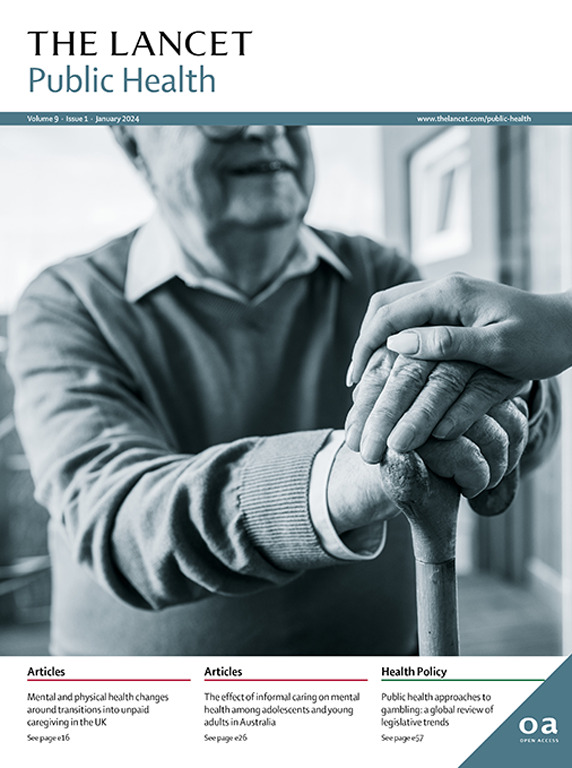Acceptability and perceptions of personalised risk-based cancer screening among health-care professionals and the general public: a systematic review and meta-analysis
IF 25.4
1区 医学
Q1 PUBLIC, ENVIRONMENTAL & OCCUPATIONAL HEALTH
引用次数: 0
Abstract
Background
Personalised risk-based screening (PRBS) can enhance the efficiency of cancer screening programnes, but little is known about support for its implementation among the general public and health-care professionals. We aimed to summarise the acceptability and perceptions of PRBS for breast, cervical, colorectal, lung, and prostate cancer screening among these groups.Methods
We conducted a systematic review and meta-analysis of original research studies reporting on breast, cervical, colorectal, lung, and prostate cancer screening; personalised risk assessments to guide PRBS; and the acceptability of and receptibility towards these approaches among the general public, health-care professionals, or both. We searched MEDLINE, Embase, Cochrane Central, PsycINFO, and CINAHL Plus for articles published between Jan 1, 2010, and April 30, 2024. Studies not reporting on the outcomes of interest and with insufficient data for analysis were excluded. Six reviewers independently screened articles, and risk of bias was assessed using the Mixed Methods Appraisal Tool. Qualitative data were analysed thematically. Quantitative data were analysed with use of random-effects meta-analysis for outcomes that had at least two studies. The study protocol was registered at PROSPERO, CRD42022354287.Findings
Our search identified 4491 unique records. After screening, 63 studies were included in our analysis, of which 36 (57%) included the general public, 21 (33%) included health-care professionals, and six (11%) included both. The majority of studies focused on breast cancer screening (43 [68%] studies), and were from North America (28 [44%]) and Europe (28 [44%]). Qualitative findings were analysed thematically, and the extracted quantitative findings were synthesised under the following topics: acceptability and perceptions of personalised risk assessments among the general public; acceptability and perceptions of PRBS among the general public; acceptability and perceptions of PRBS among health-care professionals; and barriers and facilitators to PRBS implementation among health-care professionals. The general public and health-care professionals generally found PRBS acceptable, but they needed more information about how risk was calculated and the accuracy of risk scores. Additionally, both groups were cautious about reducing screening frequencies for individuals at low risk and cited barriers such as the time and resources needed to implement an effective PRBS programme. The pooled estimate for acceptability of PRBS was 78% (95% CI 66–88) among the general public and 86% (64–99) among health-care professionals.Interpretation
The general public and health-care professionals both viewed personalised risk assessments as providing valuable information and PRBS as a logical next step to increase the quality of patient care and improve cancer mortality. However, implementation barriers at the public, health-care professional, and system level need to be addressed.Funding
National Cancer Institute and Cancer Prevention and Research Institute of Texas.医护人员和公众对基于风险的个性化癌症筛查的接受度和看法:系统回顾和荟萃分析
本文章由计算机程序翻译,如有差异,请以英文原文为准。
求助全文
约1分钟内获得全文
求助全文
来源期刊

Lancet Public Health
Medicine-Public Health, Environmental and Occupational Health
CiteScore
55.60
自引率
0.80%
发文量
305
审稿时长
8 weeks
期刊介绍:
The Lancet Public Health is committed to tackling the most pressing issues across all aspects of public health. We have a strong commitment to using science to improve health equity and social justice. In line with the values and vision of The Lancet, we take a broad and inclusive approach to public health and are interested in interdisciplinary research.
We publish a range of content types that can advance public health policies and outcomes. These include Articles, Review, Comment, and Correspondence. Learn more about the types of papers we publish.
 求助内容:
求助内容: 应助结果提醒方式:
应助结果提醒方式:


